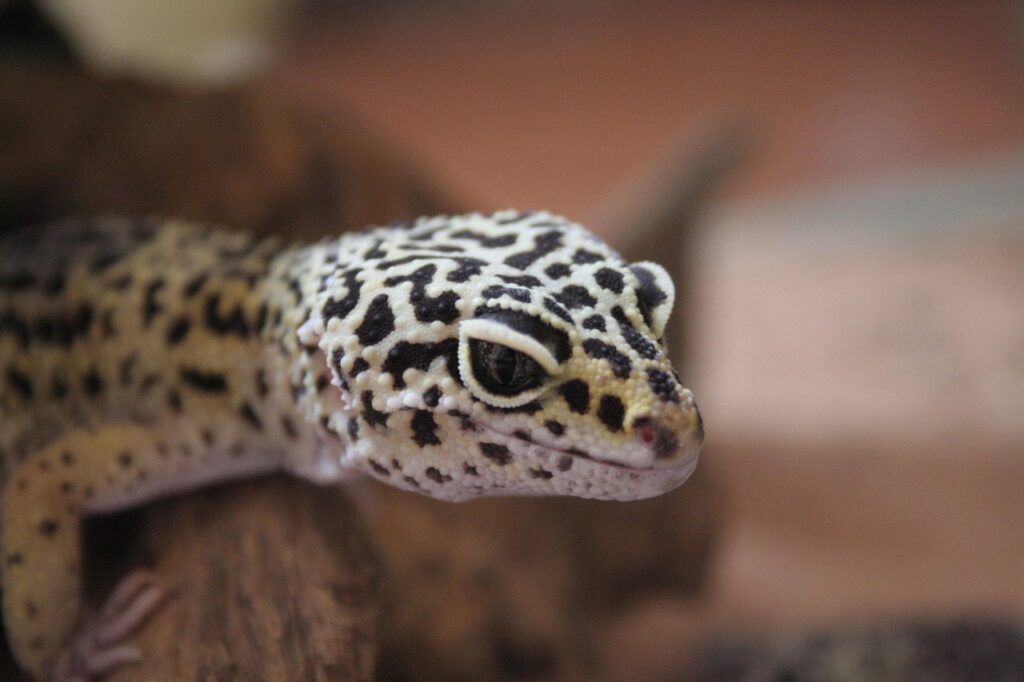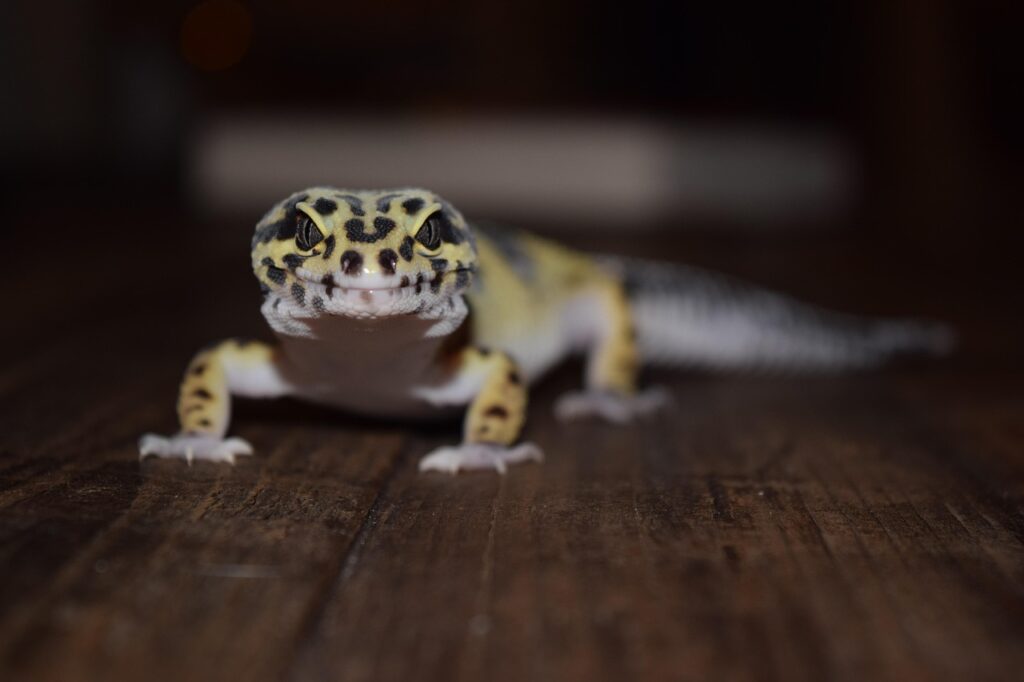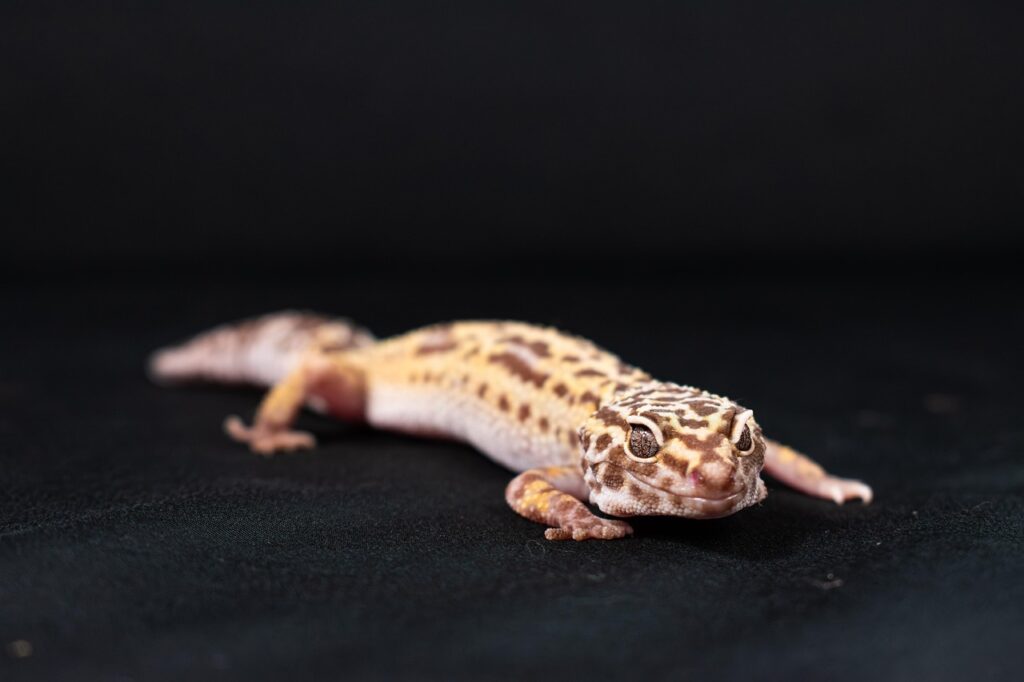Leopard geckos are one of the most popular pet reptiles due to their manageable care and captivating behavior. The ideal tank size for one adult leopard gecko is at least 20 gallons. This provides enough space for them to move around and explore their environment.

For those with multiple leopard geckos, consider a larger tank to prevent overcrowding and territorial issues. A 40-gallon tank is suitable for two or three leopard geckos, ensuring they have ample space and reducing the risk of stress.
Smaller tanks can restrict a leopard gecko’s movement and may lead to health problems. Adequate space is crucial for their well-being and to mimic their natural habitat in captivity.
Choosing the Right Size Tank for Your Leopard Gecko

Choosing a suitable tank for a leopard gecko depends on their age and size. The material of the enclosure also impacts their wellbeing and ease of maintenance.
Determining Tank Size by Age and Size
It’s important to match the tank size to the gecko’s age and size.
Hatchlings and juveniles (up to 6 months old) usually do well in a 10-gallon tank. This gives them enough space to move around without feeling overwhelmed.
Sub-adults and adults (over 6 months old) need more space to thrive. A 20-gallon tank is typically recommended for these stages, although larger tanks, such as a 30-gallon tank, provide even more room for enrichment and activity.
Table of recommended tank sizes:
| Leopard Gecko Age | Tank Size |
|---|---|
| Hatchlings | 10-gallon tank |
| Juveniles | 10-gallon tank |
| Adults | 20-gallon tank |
| Large adults | 30-gallon tank |
Pros and Cons of Tank Materials
Different materials are used for tanks, and each has its own benefits and drawbacks.
Glass tanks are popular for their durability and visibility. They allow for easy heating and light penetration. Cleaning is straightforward with glass. Unfortunately, they can be heavier and more fragile than other materials.
Plastic tanks are lightweight and typically more affordable. They are also less prone to breaking. However, plastic can scratch easily, which might affect visibility, and heating can be more challenging due to poor heat retention.
Wooden tanks are another option. They offer good insulation, which helps in maintaining temperatures. They can be custom-built to specific requirements. However, wooden tanks can be harder to clean and may deteriorate faster in humid conditions.
Creating a Comfortable Habitat Inside the Terrarium

A leopard gecko needs a well-organized environment to thrive. To ensure comfort, focus on the right type of substrate, the inclusion of hides and climbing structures, and maintaining proper temperature and humidity.
Substrate Selection and Its Importance
The substrate is what lines the bottom of the terrarium. Reptile carpet or paper towels are good choices for young geckos, as they are easy to clean and reduce the risk of ingestion.
Avoid loose substrates like sand or gravel, as they can cause health issues if swallowed.
A good substrate helps maintain cleanliness and supports the gecko’s natural behaviors. For adults, tile or slate can be an effective option.
Inclusion of Hides and Climbing Structures
Leopard geckos need places to hide to feel secure. Provide at least three hides: one on the warm side, one on the cool side, and a moist hide.
The warm side hide helps with temperature regulation. The cool side offers a place to retreat from heat. The moist hide aids in shedding and maintaining proper humidity levels.
In addition, add climbing structures like rocks and branches to keep the gecko active and stimulated.
Temperature and Humidity Control
Maintaining proper temperature and humidity is crucial. The warm side of the tank should be between 88-92°F with a cool side around 75-80°F.
Use under-tank heating pads for warmth and a thermometer to monitor temperatures. Humidity should be kept between 30-40%. Use a hygrometer to measure this.
Too much humidity can lead to respiratory problems, while too little can cause shedding issues. Heat lamps can help maintain temperature, but make sure to avoid UVB lights as they are not necessary.
Regularly check the environment to ensure all settings remain optimal.
Health and Wellness: Ensuring a Stress-Free Environment
Creating a stress-free environment for a leopard gecko is crucial for its health. Proper tank size and setup help reduce stress and prevent health issues.
Signs of Stress in Leopard Geckos
Leopard geckos show stress through their behavior. A stressed gecko might hide often or refuse to eat. Other signs include lack of energy and unusual aggression. Regular observation of your gecko’s behavior can help identify stress early.
Stress can also affect their physical health. Look for changes in their skin color or texture. Abnormal shedding and weight loss are also signs. A stressed gecko may develop health issues if not addressed.
Impact of Tank Size and Setup on Gecko Health
Tank size is vital for a gecko’s well-being. A 20-gallon tank works well for one adult gecko, providing enough floor space. Larger tanks offer more room for activity, reducing stress.
Proper setup includes hiding spots and basking areas. Hiding spots give geckos places to retreat, making them feel safe. Basking areas help regulate body temperature, crucial for digestion and energy.
Ensure the tank has a suitable substrate. Avoid loose substrates that can cause impaction. Tiles or reptile carpets are safer choices. Proper lighting and humidity levels also contribute to a healthy environment.
Leopard Gecko Care and Maintenance
To ensure a healthy and happy leopard gecko, it’s vital to provide proper care, including appropriate feeding and safe handling. Maintaining their environment clean and stable will also contribute to their well-being.
Feeding Guide and Nutrition
Leopard geckos need a diet mainly of live insects. Crickets and mealworms are commonly used. For juvenile geckos, feed daily with smaller insects, while adult geckos can be fed every other day with larger insects.
When feeding, dust insects with a calcium supplement. This helps in preventing metabolic bone disease. Additionally, provide a vitamin supplement once a week. Avoid feeding wild-caught insects as they may carry diseases or pesticides.
Place a shallow dish of water in the tank, refreshing it daily. Avoid using deep dishes, which can be a drowning hazard. Keep the feeding area clean to prevent mold and bacteria growth.
Handling and Interaction Tips
Handle geckos gently and avoid startling them. Begin by letting them get used to your hand. Move slowly and confidently. Young geckos can be more skittish, so handle them with extra care.
Limit handling sessions to about 10-15 minutes. Avoid holding them by the tail as they might detach it. Over time, frequent but gentle handling will make the gecko more comfortable.
Ensure their shelter has hiding spots, like caves or half logs, to help them feel secure. Their environment should include a heat source to create a temperature gradient, essential for digestion and health. Clean their tank regularly to prevent illnesses and keep a consistent, stable home for them.
